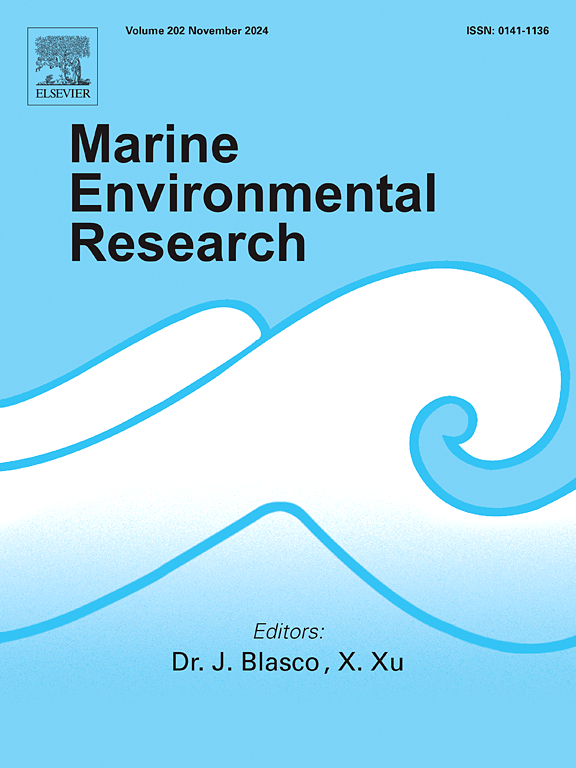δ13C, δ15N, and δ34S isotope values from preserved elasmobranch jaws: Implications for ecological studies from existing collections
IF 3
3区 环境科学与生态学
Q2 ENVIRONMENTAL SCIENCES
引用次数: 0
Abstract
Stable isotope analysis has become a widely used biogeochemical tool owing to its capacity to reveal predator foraging habitats, trophic level, and prey preferences. The breadth of applicable tissue types is quickly growing across taxa, including for elasmobranchs, with tooth isotopes gaining traction to trace within-individual variation in trophic ecology. Jaws in museums and private collections present a unique opportunity to access samples from rare or protected species and size classes. However, most of these jaws are chemically treated to prevent degradation and to whiten teeth and cartilage for aesthetic and long-term display. Prior to using stable isotopes from these jaws, we need to understand the impacts of chemical treatments on carbon, nitrogen, and sulphur isotopes. We compared the tooth preparation process (acid digestion) and δ15N, δ13C, and δ34S values of teeth from dried jaws to jaws preserved in ethanol, bleach, or hydrogen peroxide. We investigated the effects of preservation methods across three elasmobranch species with distinct tooth morphologies: cownose rays (Rhinoptera bonasus) with tooth plates, gummy sharks (Mustelus antarcticus) with small plate-like teeth, and broadnose sevengill sharks (Notorynchus cepedianus) with larger serrated teeth. Preservation had no impact on tooth digestibility or δ15N, δ13C, and δ34S values across all dentition types. These findings support the use of display jaws from private collections and museums in ecological studies using isotopes.

求助全文
约1分钟内获得全文
求助全文
来源期刊

Marine environmental research
环境科学-毒理学
CiteScore
5.90
自引率
3.00%
发文量
217
审稿时长
46 days
期刊介绍:
Marine Environmental Research publishes original research papers on chemical, physical, and biological interactions in the oceans and coastal waters. The journal serves as a forum for new information on biology, chemistry, and toxicology and syntheses that advance understanding of marine environmental processes.
Submission of multidisciplinary studies is encouraged. Studies that utilize experimental approaches to clarify the roles of anthropogenic and natural causes of changes in marine ecosystems are especially welcome, as are those studies that represent new developments of a theoretical or conceptual aspect of marine science. All papers published in this journal are reviewed by qualified peers prior to acceptance and publication. Examples of topics considered to be appropriate for the journal include, but are not limited to, the following:
– The extent, persistence, and consequences of change and the recovery from such change in natural marine systems
– The biochemical, physiological, and ecological consequences of contaminants to marine organisms and ecosystems
– The biogeochemistry of naturally occurring and anthropogenic substances
– Models that describe and predict the above processes
– Monitoring studies, to the extent that their results provide new information on functional processes
– Methodological papers describing improved quantitative techniques for the marine sciences.
 求助内容:
求助内容: 应助结果提醒方式:
应助结果提醒方式:


